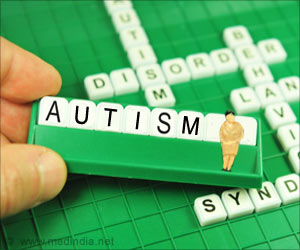
‘Brain scans show that children with bigger brains have significant intellectual disability. The development of white matter is linked to severity of the autism symptoms.’
Read More..Tweet it Now
The research was based on the brain scans taken over many years as part of the Girls with Autism, Imaging of Neurodevelopment (GAIN) and Autism Phenome Project (APP) studies that showed the importance of longitudinal studies that follow the same children from diagnosis into adolescence.Read More..
For one of the studies, 1,000 MRI scans from 400 kids were taken over a period of 15 years.
Big Brains
For the first study, the researchers used magnetic resonance imaging (MRI) to track the size of brain (volume) in 135 children without autism and 294 children with autism between the ages of 3 and 12. In children with autism, it was found that larger brain size relative to height- or disproportionate megalencephaly. It is a subtype linked with higher rates of intellectual disability and poorer overall prognosis.
According to earlier studies, it was found that children with autism having larger brain during early childhood showed no evidence of larger brain later in the childhood. It thought that these brains ‘normalized’ or shrank as the children grew up.
Advertisement
Co-senior author David Amaral a distinguished professor of psychiatry and behavioral sciences and MIND Institute faculty member said, “Bigger brain size in autism has been linked to lower IQ, and children with intellectual disabilities are harder to scan as they get older. It's a matter of sampling bias and the previous "dogma" appears to be an artefact of who got scanned when.
Advertisement
In the second study, the association between the changes in the growth of white matter in the brain with autism traits in some children was studied.
By using a type of MRI scan called diffusion-weighted imaging, the white matter regions, or tracts, in the brain was observed. White matter allows different regions in the brain to communicate with each other by providing structural connections.
This study included 69 normally developing children and 125 children with autism between the ages of 2.5 and 7. The researchers observed that the development of the white matter tracts in the brain was linked to changes in severity of autism symptoms. They found slower development in children whose symptom severity increased over time, and faster development in those children with decreased severity over time.
Lead author of the study Derek Sayre Andrews, postdoctoral scholar at the MIND Institute said, "From a biological standpoint, this emphasizes the role of white matter development in autism and autism symptoms. We hope that in the future, measurements like this can identify children who would benefit from more intensive intervention - and serve as a marker to determine the effectiveness of an intervention for a particular child.
In many children, stable levels of autism symptoms were seen throughout childhood. A significant portion can be expected to show increase or decrease in their symptom severity over time. This analysis can provide important clues regarding the brain mechanisms involved in these changes.
Differences In Sex
This study included a larger number of girls who tend to be under-represented in autism research.
Certain differences were seen in the brain trajectories of the boys and girls. The big brain subtypes were not frequently seen in girls although subtle differences in the growth of autistic girls' brains were seen.
Andrews said, "Collectively, I believe these studies are so important because they get us closer to a point where we can use our understanding of the underlying biology of autism to directly improve the quality of life for individuals in the autistic community. And that really is the ultimate goal of our research."
Source-Medindia















